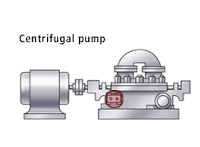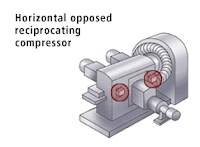The ground-fault circuit-interrutper (GFCI) was developed in the 1960’s based on a concept by Professor Charles Dalziel of the University of California at Berkeley. The GFCI became a success soon after it was developed into a commercial product by a handful of companies, including several circuit breaker manufacturers. The GFCI was first required by the Code in 1968 for underwater swimming pool lighting fixtures. Backyard swimming pools were becoming popular at that time as more and more city dwellers were moving to the more spacious suburbs. In subsequent years the Code was revised to add the required use of GFCIs to other areas of the house, especially locations where people would be standing on earth or cement ground, or near water. By the 1980’s, receptacle type GFCIs were also becoming popular. Just 25 years after the GFCI was first introduced, the number of accidental electrocutions in the U.S. had dropped in half, even though the use of electricity had more than doubled in that same time period.
These are the locations in and around the home when GFCIs were first required:
1968 - Swimming Pool Underwater Lighting
1971 - Receptacles Near Swimming Pools
1973 - Outdoor Receptacles
1975 - Bathroom Receptacles
1978 - Garage Receptacles
1981 - Whirlpools and Tubs
1987 - Receptacles Near Kitchen Sinks
1990 - Receptacles in Unfinished Basements and Crawl Spaces
1993 - Receptacles Near Wet Bar Sinks
1996 - All Kitchen Counter-Top Receptacles
2005 - Receptacles Near Laundry and Utility Sinks
Circuit grounding was one of the more hotly contested topics in the early history of electrification. In the early 1890’s, the New York Board of Fire Underwriters had condemned the practice of grounding the neutral as a dangerous practice, especially in a 3-wire Edison (120/240 Volt) system. The Edison utility companies, on the other hand, found just cause to ground their supply systems, even as others thought the utilities were doing this to just save copper and money at the cost of an increased fire risk. The great debate continued for over a decade, but in 1903 the Code was revised to recommend that these circuits be grounded, and finally in the 1913 Code a mandatory circuit grounding requirement was included for circuits like the popular residential Edison 3-wire system.
The most common way to ground a residential wiring system has always been to use the building’s metal water piping as a grounding electrode. The early Codes permitted water-piping systems of 3-Ohms or less to ground to be used as an electrode, which was usually the case if the metal water pipe extended several feet into the ground. In 1923, the Code first mentioned electrodes of driven rod or pipe. The 1925 Code further referred to these driven electrodes as “artificial” electrodes, and required them to be at least 8 feet long, with minimum diameters of 1⁄2 inch for a rod and 3⁄4 inch for pipe. It also noted that if only one of these artificial electrodes had a resistance of greater than 25 Ohms to ground, then two artificial electrodes had to be provided spaced at least six feet apart.
In 1951 the Code was revised to indicate that if there was 10 feet or less of metal water pipe in contact with the earth, or if there was the likelihood of the metal water piping system being disconnected, then the grounding system needed to be supplemented with an additional electrode. Ten years later, in 1971, the Code further strengthened that requirement by stating that a water pipe electrode must always be supplemented with an additional electrode, which in most cases meant adding a rod or pipe electrode to the house’s grounding system. In 1999 the Code was again revised to require this water pipe supplemental rod or pipe electrode to have a resistance to ground of 25 Ohms or less, or be augmented by an additional electrode. Also in recognition of the increased use of non-metallic water pipe, the 1993 Code was revised to state that interior water pipe more than 5 feet from the entrance to the building shall not be used as part of the grounding electrode system.
Homes built before the 1960’s had most of their original 125 V receptacle outlets of the non-grounding type (2-prong) (see Fig. 14). In 1947, the Code first required grounding type (3-prong) receptacles for the laundry. In 1956 the required use of grounding type receptacles was extended to basements, garages, outdoors and other areas where a person might be standing on ground. Finally, in 1962 the Code was revised to require all branch circuits to include a grounding conductor or ground path to which the grounding contacts of the receptacle must be connected. That effectively discontinued the use of non- grounding type receptacles except for replacement use in existing installations were a grounding means might not exist.
The permission for neutral grounding, the practice of using the neutral conductor as an equipment grounding conductor, was first permitted in the 1947 Code for electric ranges. At around that time many electric utilities were promoting the use of residential 240 V cooking for the post WWII housing boom, and many were even offering to install an upgraded service to older homes at no charge. However, there were no NM cables available at the time with conductors of sufficient ampacity to handle these higher amperage branch circuits. There were, though, service entrance cables of sufficient size, but they had a bare neutral conductor. This special Code permission allowed the frames of these large appliances to be grounded through the uninsulated grounded neutral conductor of the Type SE service entrance cable used to supply the branch circuit. The use of neutral grounding was also extended to electric clothes dryers in 1953. However, almost 50 years later, this special permission for neutral grounding was taken away in the 1996 Code for all but existing branch circuit installations.
Visit Sords Electric for our full list of Ground Fault Circuit Interrupters
216-765-4230
www.sordselectric.com






